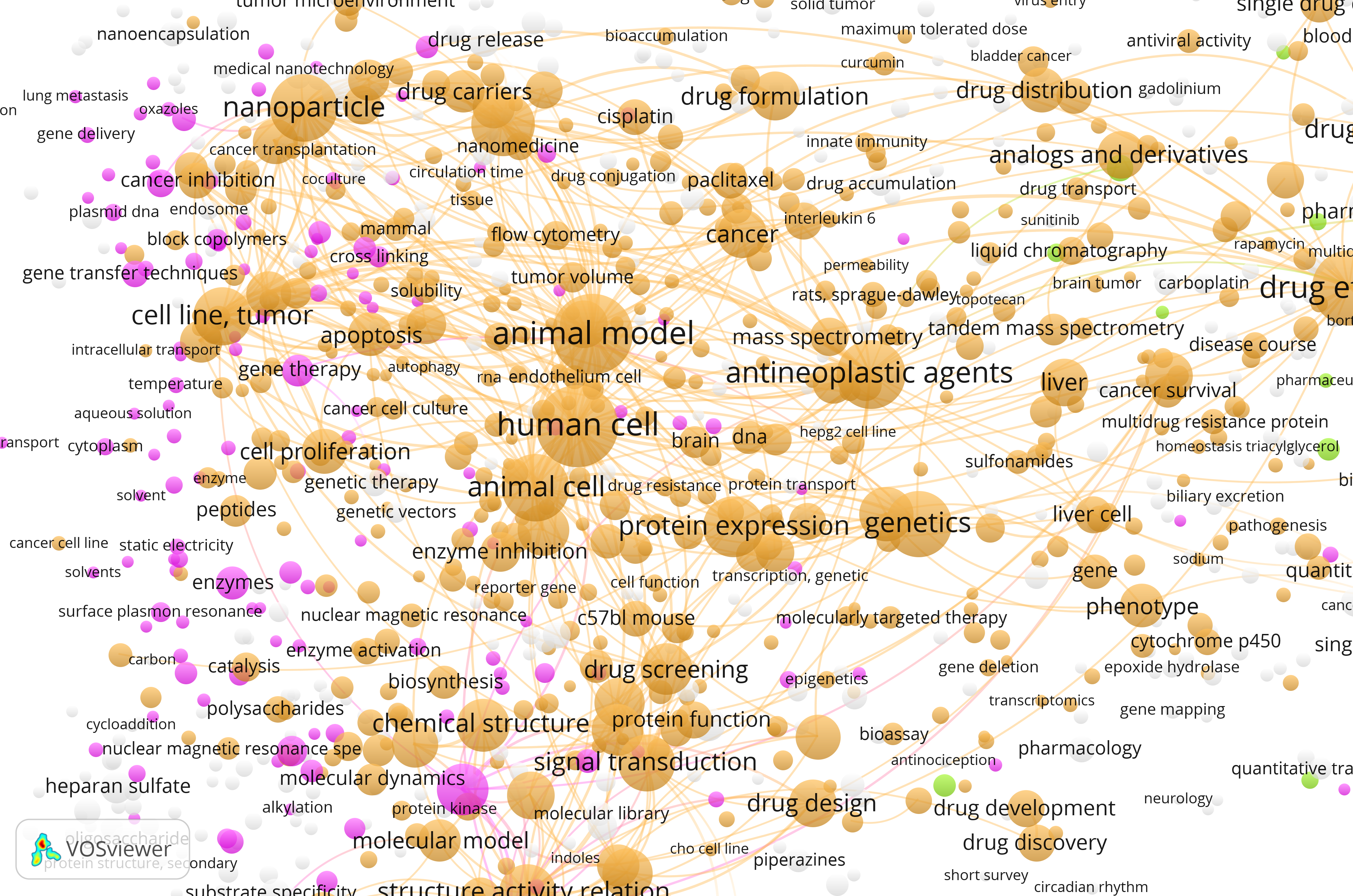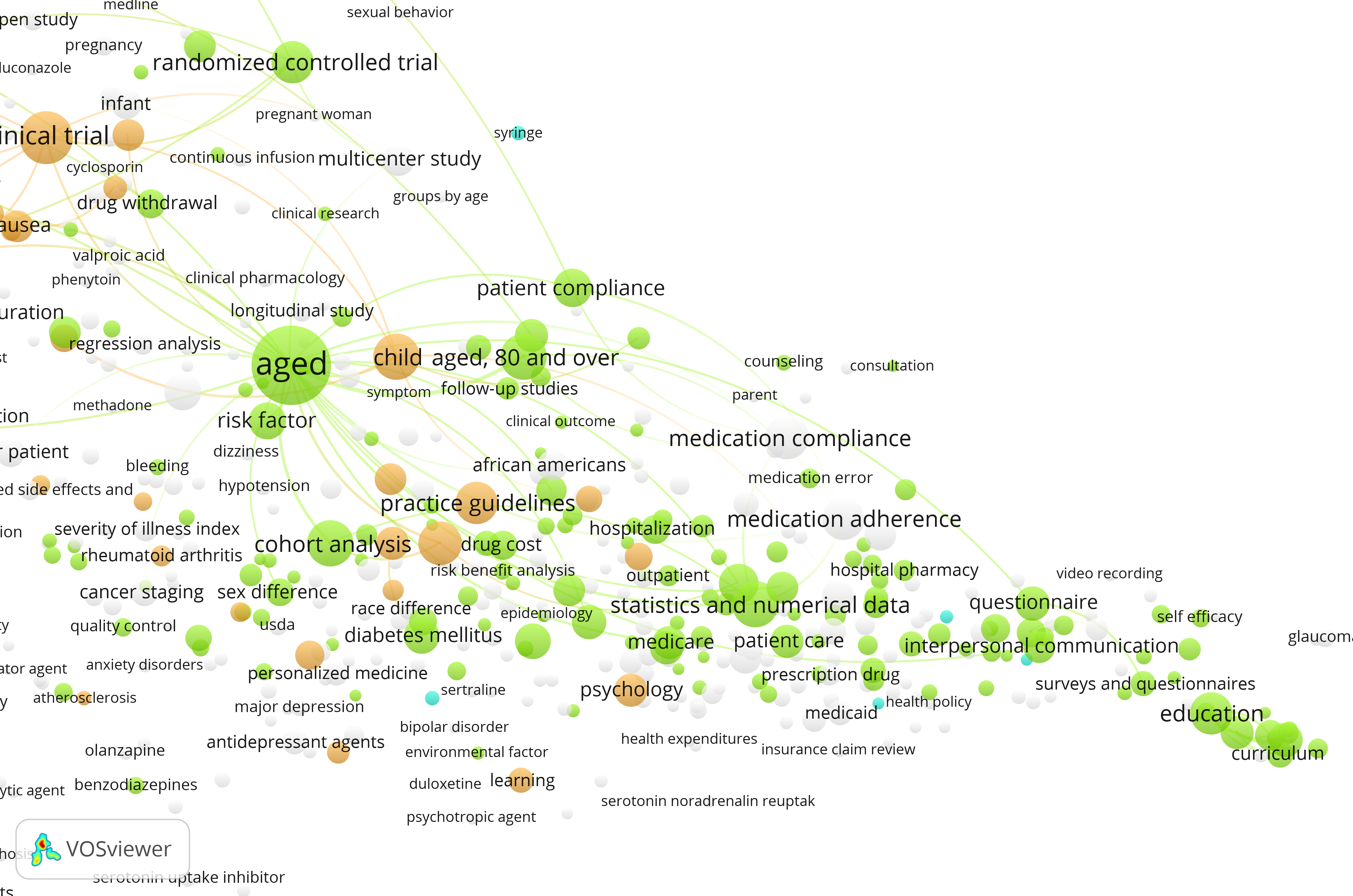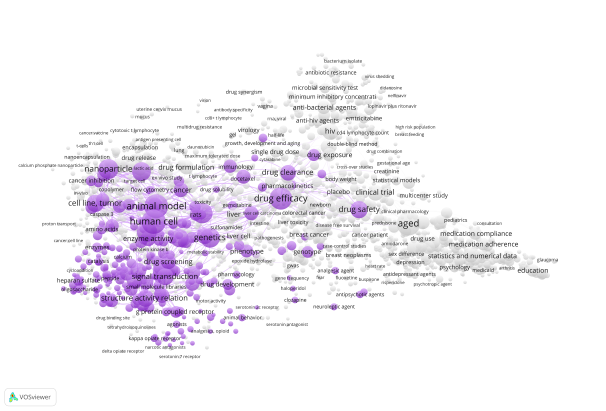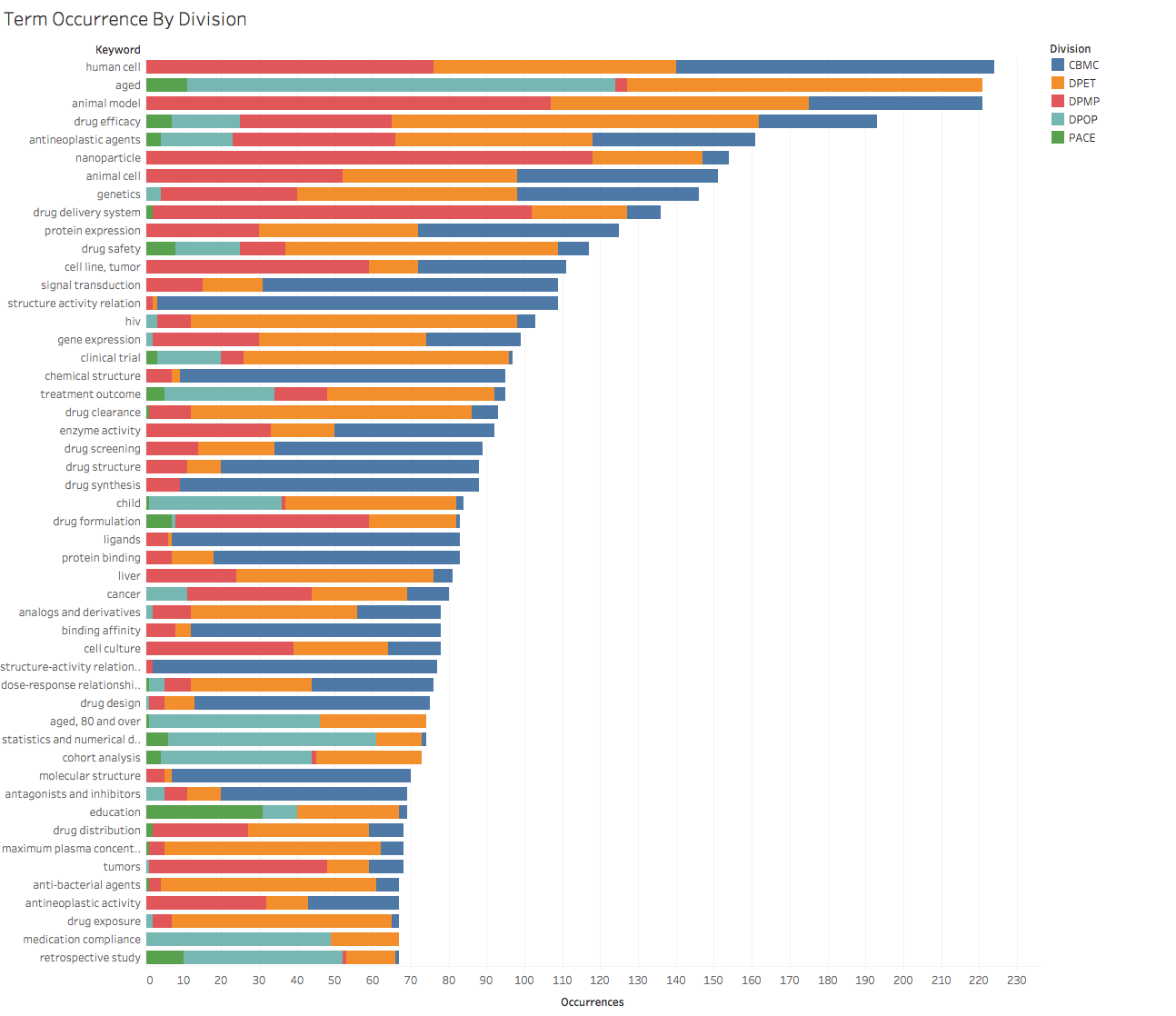Summary
The Impact Measurement and Visualization (IMV) team at the UNC Health Sciences Library (HSL) partnered with the UNC Eshelman School of Pharmacy (ESOP) to conduct a series of bibliometric analyses to examine:
1) Collaboration patterns among ESOP faculty, students, and UNC-associated researchers, and
2) Related topics of study, in ESOP publications, as indicated through research output.
For these analyses, we focused on two aspects of research output:
Co-authorship analysis – this network analysis type examines collaboration between ESOP and UNC-affiliated authors with whom they have collaborated, as presented in article-level citations.
Topic Analysis - this series of analyses examines author and index keywords, with high frequency of occurrence, and the proximity of term use within a set of citations.
Data Set
Our team conducted a search of the Scopus database, and retrieved articles for 66 ESOP faculty members, based on a list of faculty provided by ESOP. A total of 1858 publications were included in the analysis, covering publication years 2012-2017. VOSviewer, an open-source bibliometric analysis tool, was used to construct the author and topic network files, as well as to generate visualizations of each type.
Deliverables
For the co-authorship analysis, networks were constructed based on author collaboration. All authors with one or more publications were included, which resulted in the identification of 62 ESOP faculty members, and an additional 1150 UNC-affiliated, non-pharmacy researchers. Each node in the network map represents a pharmacy faculty member, or one of the paper co-authors. The size of each node represents the number of articles for a given author. Network clusters are based on co-authorship links, and are assigned by application algorithms. Proximity of nodes reflects the relational connectivity of any two authors.
For the topic analysis, our team examined a combination of author-provided and index-assigned keywords, associated with each article. For articles where no author keywords were provided, index keywords were used to ensure article representation. Terms were normalized to address variation in singular/plural forms and acronyms/full terms. Commonly-occurring terms related to study methods were also removed, based on input received from representatives of ESOP administration and faculty. Once all terms were compiled, a term threshold of 18 or more occurrences was applied to restrict the number of terms included in visualization. A final total of 996 terms were identified for inclusion.
Results
The team completed author collaboration and topic analyses for ESOP’s five academic divisions and prepared an interactive dashboard of research topics across these divisions. These analyses were incorporated into the work of the ESOP Graduate Program Visionary Committee and presented at a graduate program retreat.







